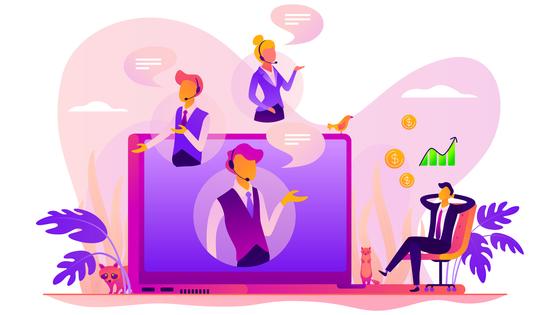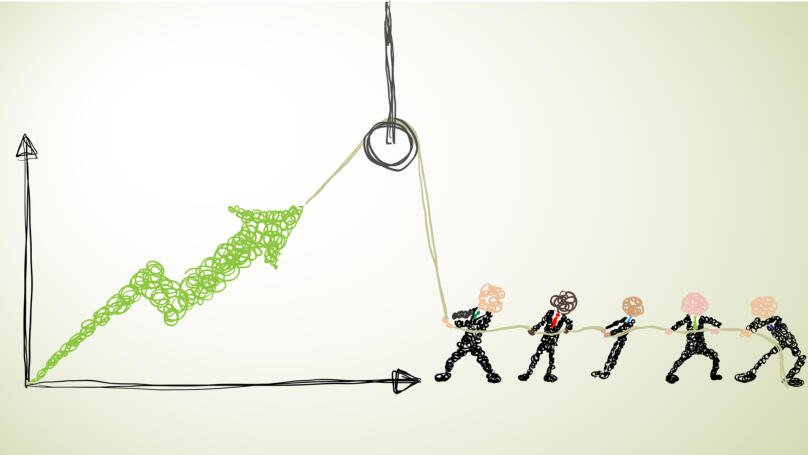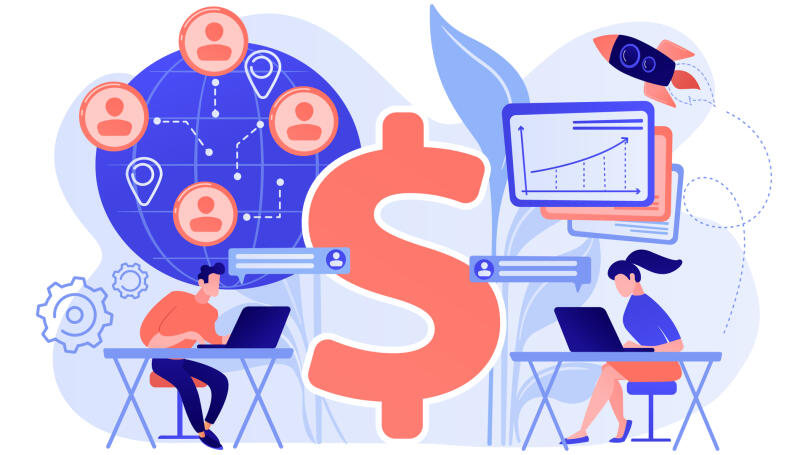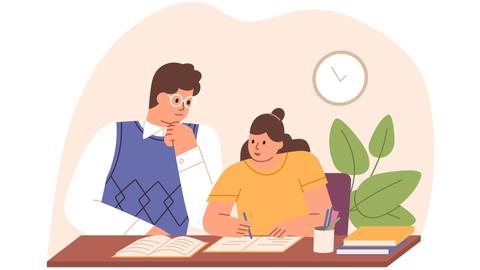The five best sales techniques for expensive products
As a rule, most people do not trust salespersons – too many offers, too many false promises, and eventually people stop believing them.

Simultaneously, the customer experience is becoming the most critical factor in sales. For instance, a recent "Superoffice" survey of 1,920 business professionals showed that improving customer experience is the primary task of entrepreneurs for the next five years. Fundamentally, the essential part of the customer experience is communication with the seller.
In the mass market, the seller often does not have time for conversations. Furthermore, they are more likely to annoy the customer than help find a common language. Nevertheless, when selling premium products in the B2B field, sales techniques built on a conversation with a customer can help close many deals and significantly increase the average check. Learn more about this from the course "Incredible Salesman: How To Sell Anything to Anyone" by following the link.
Consultative selling

The consultative selling method is that the salesperson digs deeper into the client's situation and offers them uniquely tailored solutions.
The advantages and dangers of the method.
The seller does not have a rigid conversation structure with the customer. They can take the initiative and be creative in solving the issue. However, if the salesperson is inexperienced, the lack of a specific strategy can be discombobulating.
How to apply the five parts of the method.
The method is a structure, the algorithm for building conversation between the seller and the customer.
- Establish contact - salutations and introducing yourself to the potential customer.
- Information gathering. At this stage, the seller asks the customer what they need, how the customer searched for information about the service, and how they learnt about the company.
- Product presentation. The seller shows the product to the customer, arranges a test drive, conducts a trial session, runs a test procedure, etc.
- Working with objections. Often, the customer's complaints relate to the product's pricing. In this instance, the seller explains the price and what benefits the client receives from the product's expensive components.
- Buying goods, sealing the deal.
For further reading about the method, check out Mack Hanan's "Consultative Selling."
SPIN-off sales

The SPIN-off sales method is that the seller asks the customer four types of questions to learn details about the customer's viewpoint.
Advantages and dangers of the method: the seller has specific types of questions to ask the customer. That can simultaneously help and hinder the salesperson, especially if the seller approaches their task too formally. After all, it's not your manners and adherence to corporate rules that are most important, but your ability to listen to the customer during the conversation and respond correctly to the signals they send.
How to apply the method
The seller asks the customer specific questions to know their preferences better and coerce them towards making a purchase. Questions belong to each of the groups by the name of the abbreviation in sequence:
- Situational - aimed at learning more about the problem that the client wants to solve. An essential part of working with a client in this type of sales is to learn about their previous experience, what went smoothly and what they didn't like.
- Problematic. With the aid of using problem questions, the seller learns more about the needs of the client. Simultaneously, the client may not have even been previously aware of their needs.
- Extractive. Knowing about the customer's problem, the seller tries to understand what will happen if the problem is not solved.
- Guiding. Such questions help the customer imagine a future in which the problem will be solved with the proposed product's help and make a purchase.
Read more about the method in Neil Rackham's "SPIN Selling."
SNAP sales, or flexible sales

Using the SNAP sales method, the seller must adhere to four principles in building a dialogue with the potential customer.
The advantages and dangers of the method.
In SNAP sales, the seller does not have a ready-made scheme, but in specific situations, they use specific approaches to conduct the conversation as effectively as possible. For experienced sellers, this can be a useful tool. However, for novices, this approach can be disorienting.
How to apply the method.
SNAP is an acronym that describes the four principles that help convince a customer to buy a product.
- Simplicity - keep it simple and don't over-complicate it! Describe the benefits of the product to make it easy for your customer to understand and speak their language.
- Invaluable - demonstrate to the customer your offer that can level-up their life and be indispensable.
- Always Align (keep your word). Be honest with the client; do not promise them something if you cannot guarantee it.
- Raise Priorities. Tell the customer how your product compares favourably with your competitors' offers and why they should buy it right now.
Read more about the SNAP method with Jill Konrath's "SNAP Selling."
Challenge sales

The "challenge sales" method is where the seller builds a relationship with the client according to a particular scheme.
The advantages and dangers of the method.
The method is suitable only for experienced sellers who "feel" the customer. However, for beginners, there is a danger of blowing the deal.
There are three steps involved when applying this method.
- Training. The seller demonstrates a high level of expertise to the client. That can be achieved, for instance, by promoting a personal brand.
- Adaptation. The seller builds a personal relationship with the customer.
- Control. The seller takes the initiative and pushes the customer to buy the product. For example, they talk about the possible negative consequences of not purchasing the product here and now.
If you want to read more about the "challenge sales" technique, check out Matthew Dixon and Brent Adamson's "The Challenger Sale. Taking Control of the Customer Conversation."
Sandler-sales

What is the method: the company does not fight for every customer, does not waste time on those who are not interested in its services.
Advantages and dangers of the method: the method is suitable only for top-rated companies or companies where demand for their services exceeds supply.
How to apply the method: the seller creates a situation where the customer is primarily interested in the transaction and shows that the company's services are exclusive and in high demand. When using this method, it is vital to elucidate the restrictions in advance, for example, on the budget and deadline. If you fail to do this, the deal may fall apart at the last minute.
To read more about this method, check out David Mattson's "The Sandler Rules for Sales Leaders."
Sales techniques will help you find a successful approach to win over even the most demanding potential buyer. Nevertheless, it is crucial not only to know about these techniques but also to have the experience of communicating with the client and adapting to them. If a salesperson knows how to listen and hear their client, these techniques will help them close any deal.
Share this with your friends via:
Latest News

A significant stage in the development of the alternative education system has begun in West Northamptonshire in the UK: the County Council is actively calling on parents, guardians, and trustees to participate in shaping the future of this key area.

Outwoods Primary School in Atherstone, Warwickshire, having experienced deep sadness after the loss of their famous cat, Silla, has found solace in a new pet – a Maine Coon named Aloysius O’Hara.

In modern universities, artificial intelligence, and in particular ChatGPT, is rapidly transforming from a controversial tool into a full-fledged student assistant.

An innovative educational project is gaining momentum in UK primary schools, aiming to change attitudes towards video games.

The Massachusetts Institute of Technology (MIT) presents MIT Learn – a revolutionary online platform that opens a “new front door” to access university knowledge and resources.












 Life After the Holidays: How to Beat the Post-New Year Blues
Life After the Holidays: How to Beat the Post-New Year Blues
 Which Christmas Movie Character Are You?
Which Christmas Movie Character Are You?
 Your New Year’s Forecast: What Awaits You in the New Year?
Your New Year’s Forecast: What Awaits You in the New Year?
 Test. What Career Goal Should You Set for Next Year?
Test. What Career Goal Should You Set for Next Year?
 Test. Which New Year Archetype Are You?
Test. Which New Year Archetype Are You?
 Test. How Should You Spend the Winter Holidays?
Test. How Should You Spend the Winter Holidays?
